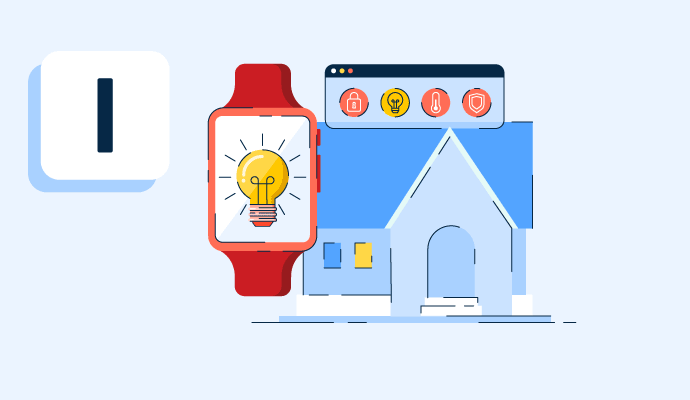
Internet of Things (IoT) devices are hardware instruments that collect and exchange data over the internet. These devices are programmed to run specific applications and can be embedded into other IoT devices.
IoT devices are part of an ecosystem where each device communicates with other similar devices to automate chores for home and business. Many businesses that use IoT devices adopt IoT device management software to track, monitor, and manage physical IoT devices.
IoT gadgets can transmit useful sensor data to consumers, companies, or any intended recipients. They can be divided into three primary categories: industrial, commercial, and consumer.
For instance, devices in a smart home like smart TVs, speakers, toys, wearables, and appliances detect and react to human presence. Someone's car interacts with the garage to open the door when they get home. When they enter, the lighting dims to a lower intensity and color based on data from their smartwatch; the thermostat is already set to their chosen temperature.
An IoT device comprises various components that work together to collect data, process information, and communicate with other devices or cloud services. IoT device components can be categorized as:
IoT devices have different purposes, but they all operate in similar ways. IoT devices sense events occurring in the real world. They typically have an integrated central processing unit (CPU), network adapter, and firmware connected to a dynamic host configuration protocol server. It also needs an IP address to function over the network.
A software program configures and administers the majority of IoT devices, like when consumers use a smartphone app to manage the lighting in their house. Some gadgets don't require external programs because they include inbuilt web servers, for example, when the lights turn on as a person enters a room.
Below are some common examples of IoT devices.
IoT devices face two significant concerns:
IoT devices are non-standard devices that can wirelessly connect to a network and exchange data. IoT devices extend internet connectivity beyond traditional devices like smartphones, laptops, tablets, and desktops. Businesses can now engage and communicate through networks.
Edge computing refers to a range of networks and devices close to the user. In reality, a significant driver of edge computing is the expanding IoT market. IoT devices produce massive volumes of data as more and more become connected. However, processing all of this data in the cloud might not be the best idea.
First, it can be expensive to transmit all data to the cloud. Second, transferring a lot of data to the cloud can result in bandwidth and latency problems. Instead of sending data to a centralized cloud thousands of kilometers away, edge computing processes data close to the source.
Edge devices conduct powerful analytics on the information at the network's edge and immediately give businesses the forecasts and solutions they need.
Learn more about IoT security to keep IoT devices safe against cyber attacks.
Sagar Joshi is a former content marketing specialist at G2 in India. He is an engineer with a keen interest in data analytics and cybersecurity. He writes about topics related to them. You can find him reading books, learning a new language, or playing pool in his free time.
What is IoT security? Internet of Things (IoT) security protects connected devices and...
 by Sagar Joshi
by Sagar Joshi
What is cybersecurity? Cybersecurity refers to actions taken to combat threats against...
 by Sagar Joshi
by Sagar Joshi
There is never a full stop in the battle against online fraud.
 by Mara Calvello
by Mara Calvello
What is IoT security? Internet of Things (IoT) security protects connected devices and...
 by Sagar Joshi
by Sagar Joshi
What is cybersecurity? Cybersecurity refers to actions taken to combat threats against...
 by Sagar Joshi
by Sagar Joshi


